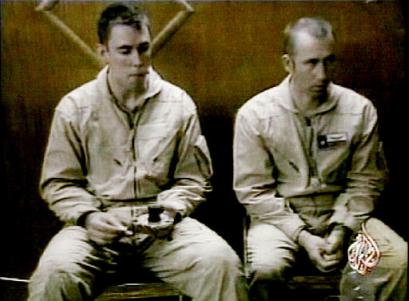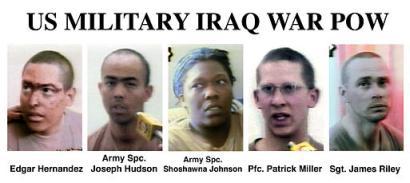| SPECIALNEWS
March 24, 2003 |
Shock
and Awe
Our Photo Gallery |
||||
|
The military posture and capability of the United States of America are, today, dominant. Simply put, there is no external adversary in the world that can successfully challenge the extraordinary power of the American military in either regional conflict or in "conventional" war as we know it once the United States makes the commitment to take whatever action may be needed. To be sure, the first phase of a crisis may be the most difficult—if an aggressor has attacked and U.S. forces are not in place. |
 |
||||

|
Given this reality that our military dominance can and will extend for some considerable time to come, provided we are prepared to use it, why then is a re-examination of American defense posture and doctrine important? The answers to this question involve (1) the changing nature of the domestic and international environments; (2) the complex nature of resolving inter and intra-state conflict that falls outside conventional war, including peacekeeping, and countering terrorism, crime, and the use of weapons of mass destruction; (3) resource constraints; (4) defense infrastructure and technical industrial bases raised on a large, continuous infusion of funding now facing a future of austerity; and (5) the vast uncertainties of the so-called social, economic, and information revolutions that could check or counter many of the nation's assumptions as well as public support currently underwriting defense. | ||||
| In designing its defense posture, the United States has adopted the doctrine of employing "decisive or overwhelming force." This doctrine reinforces American advantages in strategic mobility, prepositioning, technology, training, and in fielding integrated military systems to provide and retain superiority, and responds to the minimum casualty and collateral damage criteria set first in the Reagan Administration. The Revolution in Military Affairs or RMA is cited as the phenomenon or process by which the United States continues to exploit technology to maintain this decisive force advantage, particularly in terms of achieving "dominant battlefield awareness." Through this awareness, the United States should be able to obtain perfect or near perfect information on virtually all technical aspects of the battlefield and therefore be able to defeat or destroy an adversary more effectively, with fewer losses to ourselves and with a range of capabilities from long-range precision strike to more effective close-in weapons. |

|
||||
|
|
The aim
of Rapid Dominance is to affect the will, perception, and understanding
of the adversary to fit or respond to our strategic policy ends through
imposing a regime of Shock and Awe. Clearly, the traditional military
aim of destroying, defeating, or neutralizing the adversary's military
capability is a fundamental and necessary component of Rapid Dominance.
Our intent, however, is to field a range of capabilities to induce
sufficient Shock and Awe to render the adversary impotent. This means
that physical and psychological effects must be obtained.
Rapid Dominance would therefore provide the ability to control, on an immediate basis, the entire region of operational interest and the environment, broadly defined, in and around that area of interest. Beyond achieving decisive force and dominant battlefield awareness, we envisage Rapid Dominance producing a capability that can more effectively and efficiently achieve the stated political or military objectives underwriting the use of force by rendering the adversary completely impotent. |
||||
| This Rapid
Dominance force can be assessed against five sets of questions:
· First, assuming that a Rapid Dominance force can be fielded with the appropriate capabilities of Shock and Awe to affect and shape the adversary's will, how would this force compare with and improve on our ability to fight, win, and deal with a major regional contingency (MRC)? · Second, what utility, if any, does Rapid Dominance and its application of Shock and Awe imply for Operations Other Than War (OOTW)? Where might Rapid Dominance apply in OOTW, where would it not, and where might it offer mixed benefits? · Third, what are the political implications of Rapid Dominance in both broad and specific applications and could this lead to a form of political deterrence to underwrite future U.S. policy? Would this political deterrence prove acceptable to allies and to our own public? · Fourth, what might Rapid Dominance mean for alliances, coalitions, and the conduct of allied and combined operations? · Finally, what are the consequences of Rapid Dominance on defense resource investment priorities and future budgets? |
We also would like to acknowledge the support and role of the National Defense University in sponsoring this first effort. In particular, we owe a huge debt of gratitude to Dr. David Alberts of NDU whose intelligence, enthusiasm, and wisdom, as well as his full support, have been invaluable and without which this project would have been far less productive.

|
||||
